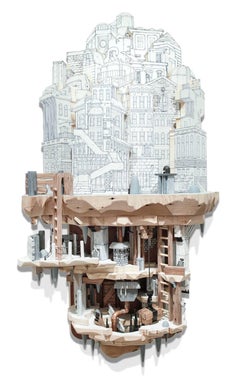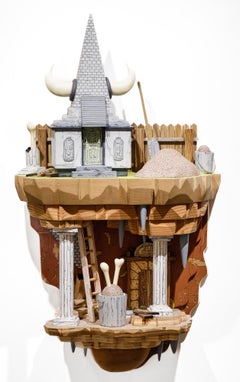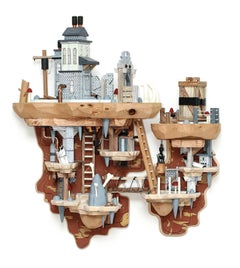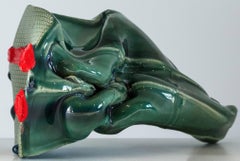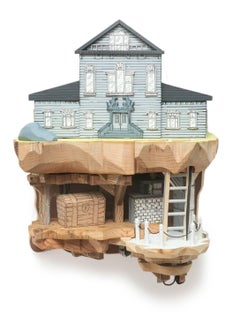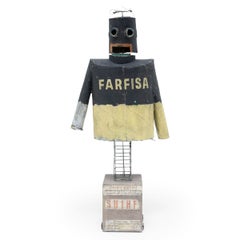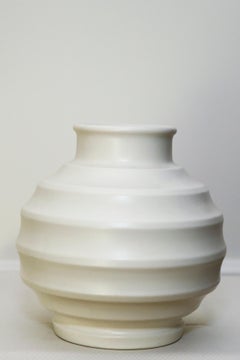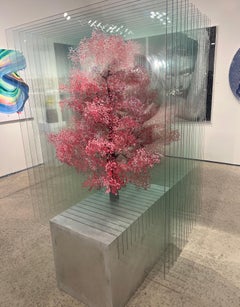The Redpath Mansion was built in 1886 for members of the Redpath family – wealthy industrialists who constructed the Lachine Canal and founded the sugar refinery that bears their name. This majestic house was erected in the fabled Golden Square Mile of Montreal. By the mid-20th century, it was one of the few remaining Queen Anne style homes in this city. The Sochaczevski family, purchased it in 1986 and within that year, obtained a license to demolish the building. Approximately 40% of the property was leveled. Organizations such as Heritage Montreal and Save Montreal obtained an injunction to suspend the execution of the license and the destruction of the mansion. It was temporarily saved. In 2014, the Mayor of Montreal, Denis Coderre, sided in favour of the Sochaczevski family, granting them the license to level the Redpath Mansion. In a statement to the media, when substantiating his reasoning, Denis Coderre said, “It was too dangerous, so I asked that we demolish the building.”
The disappearance of the Redpath Mansion represented a great loss to Montreal’s architectural landscape. Organizations such as Heritage Montreal and Save Montreal, contended that it possessed immense cultural value; and during the course of almost three decades – 1986 to 2014 - struggled to save this rare Queen Anne style home from the wrecking ball. Albeit, the Sochaczevski family argued that it was old and unsafe, and that a restoration of the once stately home would be very costly.
During the span marked by the first attempt at a demolition and the final decision by the mayor of Montreal (i.e. 1986 – 2014), The Redpath Mansion’s already dire condition worsened. It stood vacant and exposed to the elements. Nothing to upkeep the house was implemented, neither by the owners, or the city of Montreal; which ultimately compromised its structural viability.
The events surrounding the Redpath Mansion, came to my attention in the summer of 2010. It was during a visit to Mount Sinai Hospital, in Montreal, where my father lay stricken by a terminal disease known as pulmonary fibrosis. I came upon a newspaper article in the Montreal Gazette. It described the Redpath Mansion case. I likened the decaying building with the final stages of my father’s life.
The Redpath Mansion gained even greater significance for me when I went in person to the Golden Square Mile - in the city centre – and stood before it along Du Musée Street. I experienced it as a powerful metaphor for the transient nature of life. It also inspired thoughts related to generational ties, and how familial bonds act to influence and shape a person’s identity.
The program of work I plan to undertake aims at building a scale model of the Redpath Mansion, as it appeared just before its demolition, in 2014. The physical height of this scale model is set at approximately 1 metre. I wish to place emphasis on the craft aspect, by creating a visual idiom based on details and decaying forms that allude to our connection to the past. For example, old pictures found among the rubble, scattered clothing and shoes, all of which are suggestive of a past ethos.
I steer clear of political and social issues and aim to view this project with a more poetic lens, hoping to move the focus from societal problems to problems we face inside ourselves. The end result, or the finished piece would make a statement in a more introspective and emotional way, and show that the past weighs on the present, almost to the point of haunting.
The viewer of the finished scale model will view it in the round, and in so doing perceive a definite narrative that addresses questions of identity, memory and loss.
Ivan Markovic
The Redpath Mansion, 2019
mixed media
37h x 20w x 24d in
93.98h x 50.80w x 60.96d cm
IVM007
IVAN MARKOVIC was born in Montreal, Quebec in 1970. At an early age, he showed a natural propensity for drawing. At 15 years of age, he went to Paris, France to attend the Fine Arts school Creatione et Future. This experience allowed him to become a better draftsman and encouraged him to take his first steps in the art of oil painting. In 1994, he received a Bachelor of Fine Arts degree from Concordia University in Montreal. During his undergraduate degree he developed an interest for Art History and life drawing.
After graduation, Ivan Markovic moved to Madrid, Spain to work at the Prado museum, where he made copies of Old Masters’ paintings, and developed an understanding for the materials and techniques of Spanish, Italian and Flemish art. He received a Master of Fine Arts degree from Bretton Hall College, University of Leeds, in the U.K. in 1997. His graduate work focused on large-scale paintings that alluded to baroque and neoclassical painting. In parallel, he pursued his other passion, teaching, by instructing a figure drawing course. Upon completing his MFA, he returned to Madrid to work as a practicing artist and art teacher for 13 years. During this time, he experimented with a diverse range of media. Of these, he was most captivated by sculpture. In 2010, he came back to his native Montreal, thus completing a formative cycle that has lasted 25 years.
Currently, Ivan Markovic lives and works between Montreal, Chicago, and Madrid. He creates three-dimensional renditions of people facing situations of adversity, especially those that live on the fringe of society. His work has been featured in solo exhibitions in Canada, the United States and Europe, and is also on permanent display in privately owned collections of art.
Ivan Markovic
b. 1970, Montreal, Quebec
Education
1997 Master of Fine Arts, Bretton Hall College, University of Leeds, England.
1994 Bachelor of Fine Arts, Concordia University, Montreal, Canada.
1986 Studies at the Fine Arts School, Création et Future, Paris, France.
Selected Exhibitions
2020 Double Feature: Art Shay and Ivan Markovic, 2019, Gallery Victor Armendariz, Chicago, IL
2019 SOFA Chicago 2019, Navy Pier, Gallery Victor Armendariz, Chicago, IL
2018 SOFA Chicago 2018, Navy Pier, Gallery Victor Armendariz, Chicago, IL
Art Market Hamptons, Gallery Victor Armendariz, Bridgehampton, NY
Art On Paper, Gallery Victor Armendariz, New York, NY
2017 Art Toronto, Galerie D’Este, Toronto, Canada.
SOFA Chicago, Navy Pier, Option Art, Chicago, IL
Papier/10th Edition, Contemporary Art Fair of Works on Paper, Galerie D’Este, Mlt., Canada.
2016 SOFA Chicago, Navy Pier, Option Art, Chicago, U.S.A.
2016 Toronto International Art Fair, Galerie D’Este, Toronto, Canada.
2016 Beyond the Pale, Galerie D’Este, Montreal, Canada.
2014 On the Fringe, Galerie D’Este, Montreal, Canada.
Love Art, Galerie D’Este, Toronto, Canada.
Papier 14, Contemporary Art Fair of Works on Paper, Galerie D’Este, Montreal, Canada.
2013 Shades of Isolation, Galerie D’Este, Montreal, Canada.
2013 Toronto International Art Fair, Galerie D’Este, Toronto, Canada.
Papier 13, Contemporary Art Fair of Works on Paper, Galerie D’Este, Montreal, Canada.
2012 Papier 12, Contemporary Art Fair of Works on Paper, Galerie D’Este, Montreal, Canada.
2011 Papier 11, Contemporary Art Fair of Works on Paper, Galerie D’Este, Montreal, Canada
2004 Galería Francisco Duayer, Madrid, Spain.
2004 Fundación Cultural Mapfre Vida (Premio Penagos de Dibujo), Madrid, Spain.
2003 Centro Intergrado Arganzuela (Ayuntamento de Madrid), Madrid, Spain.
2003 Galería Francisco Duayer, Madrid, Spain.
2001 Galería Francisco Duayer, Madrid, Spain.
2000 Sala Goya, Círculo de Bellas Artes, Madrid, Spain.
1998 Instituto Cervantes,
John Hancock Center...
